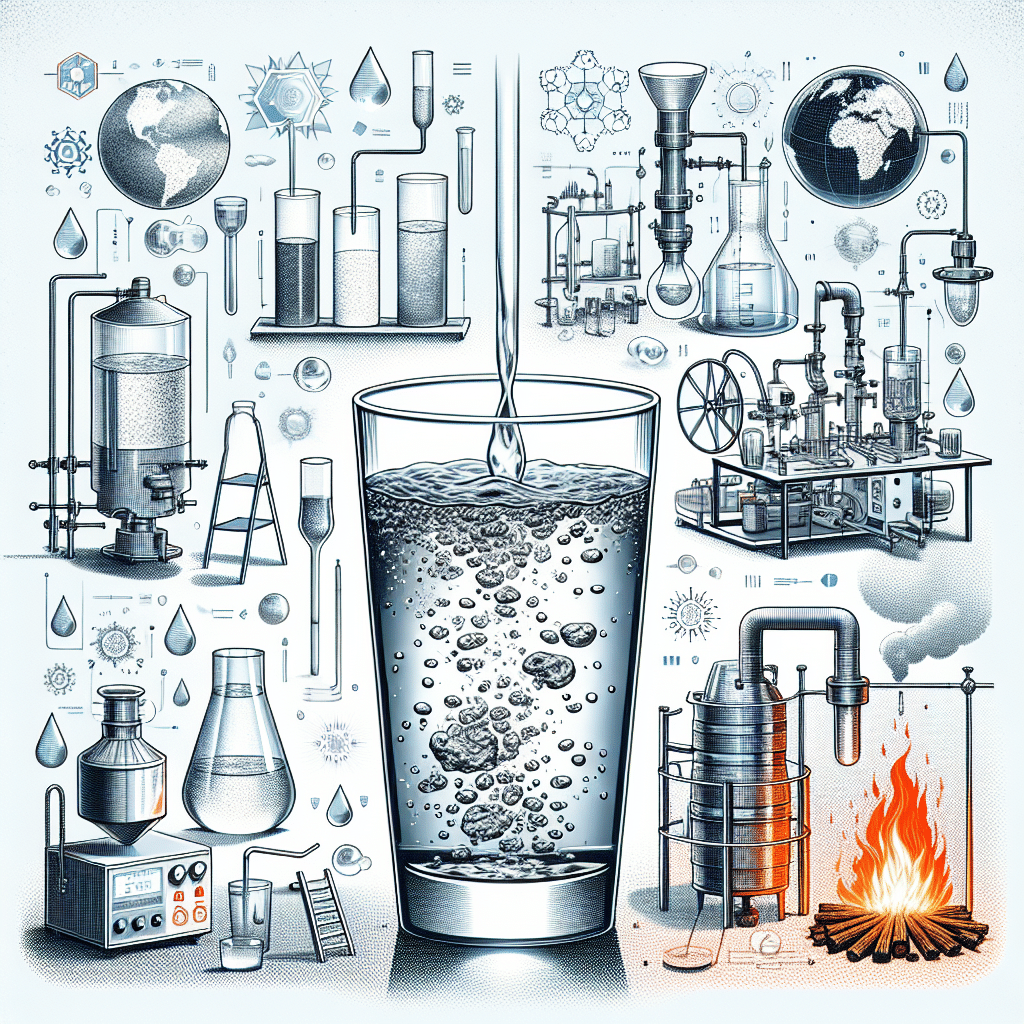Understanding the Need for Safe Drinking Water
Access to safe drinking water is a fundamental human right. However, billions of people globally still lack reliable access to clean water. Polluted water sources can lead to severe health risks, including gastrointestinal infections, cholera, and other waterborne diseases. Therefore, the necessity of effective water purification methods cannot be overstated.
The Importance of Water Purification
Water purification methods are essential for removing contaminants, including bacteria, viruses, chemicals, and physical impurities. Various techniques exist, each with its strengths and weaknesses. Combining these methods often provides a more comprehensive solution for ensuring the safety of drinking water. The following sections discuss different purification techniques and how they can be integrated for optimal results.
Common Water Contaminants
To understand purification methods, it’s crucial to recognize the common contaminants found in water sources:
- Biological Contaminants: Bacteria, viruses, and protozoa that can cause diseases.
- Chemical Contaminants: Pesticides, heavy metals, and pharmaceuticals that can harm human health.
- Physical Contaminants: Sediments, silt, and other particulate matter that degrade water quality.
Key Purification Methods
1. Filtration
Activated Carbon Filters
Activated carbon filters are effective in removing chlorine, volatile organic compounds (VOCs), and some heavy metals. They’re commonly used in household and municipal water filtration systems.
Reverse Osmosis (RO)
Reverse osmosis systems use a semipermeable membrane to remove 90-99% of contaminants, including salts, heavy metals, and some microorganisms. These systems require regular maintenance but are highly effective for purified drinking water.
Sand Filter
Sand filters are a simple yet effective method for removing sediment and larger pathogens. They’re often used in conjunction with other methods to enhance water quality.
2. Chemical Treatment
Chlorination
Chlorination is a widely used method to disinfect water. While effective against many pathogens, it doesn’t remove chemical contaminants, and by-products from chlorination may pose health risks.
Ozonation
Ozone is a powerful oxidant that can kill bacteria and viruses. Ozonation doesn’t leave harmful residues but requires specialized equipment, making it less common in smaller applications.
3. UV Purification
Ultraviolet (UV) Light
UV purification systems use short-wavelength ultraviolet light to inactivate microorganisms by damaging their DNA. This method is chemical-free and effective against bacteria, viruses, and protozoa.
Benefits of Combining Purification Methods
Combining multiple purification methods can address the limitations of each technique, ensuring comprehensive removal of contaminants. Below are some key benefits of using a multi-barrier approach:
Enhanced Efficiency
Utilizing a combination of methods, such as filtration and UV purification, can lead to a significant reduction in the concentration of both biological and chemical contaminants. For example, sediment removal through a sand filter can enhance the effectiveness of subsequent UV treatment by allowing UV light to penetrate water more efficiently.
Cost-Effective Solutions
While individual methods may require investment, a combined approach can lead to long-term savings. For example, a household may invest in an activated carbon filter for taste and odor and a reverse osmosis system for more thorough treatment. By coupling these systems, households may avoid purchasing bottled water, ultimately reducing costs.
Improved Taste and Odor
Implementing activated carbon filtration in combination with reverse osmosis can not only ensure chemical contaminants are removed but can also improve the overall taste and odor of water. This is particularly beneficial for areas with strong chlorine flavors.
Flexibility and Adaptability
The beauty of a multi-method approach is its adaptiveness. Different regions face varying water quality issues, necessitating tailored purification systems. For example, communities with high bacterial contamination may prioritize UV treatment alongside filtration, while those facing chemical pollution might focus more on carbon and RO systems.
Case Studies: Effective Implementations of Combined Methods
Residential Systems
In many urban areas, a combination of filtration, reverse osmosis, and UV purification has become the norm. Many households invest in comprehensive home purification units that integrate all three systems. Research shows that such combined solutions drastically reduce the presence of heavy metals, pathogens, and chemical substances, resulting in safer drinking water.
Community-Based Solutions
Some rural communities facing water scarcity have adopted a multi-stage purification approach incorporating gravity-fed sand filtration coupled with chlorination and UV treatment. This system not only purifies but aids in the sustainability of water resources, optimizing available supplies and ensuring long-term access to safe drinking water.
Challenges and Considerations
While combining purification methods is advantageous, challenges exist. The initial investment costs for advanced systems can be high, particularly for communities lacking resources. Regular maintenance and replacement of filters, membranes, and UV bulbs are necessary to ensure continued effectiveness.
Regulatory Compliance
Compliance with local water quality standards and regulations is crucial. Understanding these regulations helps ensure that the purification methods employed meet health and safety guidelines.
Conclusion
By embracing a multi-method approach to water purification, users can ensure the safety and palatability of their drinking water. Each method contributes uniquely to the overall process, addressing specific contaminants and enhancing efficiency. While investment and maintenance may pose challenges, the benefits of combining multiple purification techniques make it a worthwhile endeavor in the pursuit of clean and safe drinking water.
